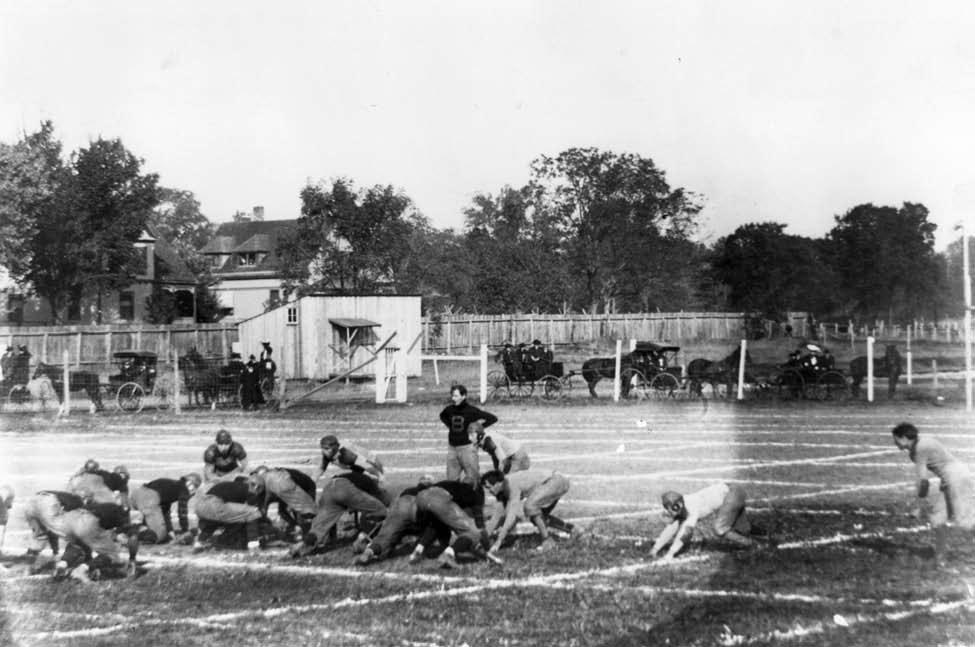Dickey Maegels Interview 1979 – Let’s Learn In 2024!
In 1979, former Major League Baseball player Richard “Dickey” Maegle sat down for an insightful interview, famously known as the “Dickey Maegels Interview 1979.” This interview provided a glimpse into various aspects of his career that were previously unknown to many.
In this article, we delve into the insightful reflections and candid revelations shared by Dickey Maegle during his 1979 interview, shedding light on various aspects of his illustrious career and life journey.
Background Of The Dickey Maegels Interview 1979 – A Comprehensive Guide!
Dickey Maegle rose to prominence as a star running back at Rice University in Houston during the early 1950s. However, he became widely recognized due to an incident during the 1954 Cotton Bowl game against the University of Alabama.
While on a long touchdown run, Maegle was tackled by an opposing player, Tommy Lewis, who had come off the bench.
Despite this setback, Rice won the game. The incident overshadowed Maegle’s remarkable college career, where he even ranked fourth in Heisman Trophy voting. He was later drafted by the San Francisco 49ers.
What Insights Did Dickey Maegle Reveal During His 1979 Interview?

During his 1979 interview, Dickey Maegle shared various insights into his life and career, offering a deeper understanding of his experiences. Some of the insights he revealed include:
Perspective on the Cotton Bowl Incident:
In the first place, Maegle expressed understanding towards Tommy Lewis, the player who tackled him during the Cotton Bowl incident, stating that he harbored no ill will and didn’t let the incident affect him.
Challenges in the NFL:
On the other hand, Maegle admitted to facing difficulties in transitioning to the NFL, where he was primarily used as a defensive back instead of a running back, impacting his confidence and potential.
Reflections on College Football:
Also, Maegle reminisced about his college football days, recalling cherished memories of camaraderie and competition, despite the challenges he faced.
Read Eerd River – Everything You’re Looking For In 2024!
Lastly, Life After Football:
After retiring from football, Maegle discussed his journey of self-discovery and eventual success in real estate and business in Texas, emphasizing the fulfillment he found in family, friends, and business endeavors.
These insights provided a nuanced perspective on Maegle’s career and life, highlighting themes of resilience, gratitude, and personal growth.
Key Points From The Dickey Maegels Interview 1979 :

During the 1979 interview, conducted 25 years after the Cotton Bowl incident, Maegle candidly shared various revelations:
- Firstly, Maegle expressed understanding towards Lewis, stating that he never held any grudges and didn’t let the tackle affect him.
- Moreover, He admitted to facing challenges in transitioning to the NFL, where he was primarily utilized as a defensive back rather than a running back, impacting his confidence and potential.
- Also, Maegle recounted how Rice almost secured another significant victory against Alabama in the 1954 Sugar Bowl but fell short.
- Furthermore, He revealed struggles with persistent knee and ankle injuries during his NFL career, which hindered his performance.
- In the end, After retiring from football in 1958, Maegle underwent a period of self-discovery before finding success in real estate and business in Texas.
Key Quotes From Dickey Maegels Interview 1979:
Maegle’s quotes from the interview offer further insight into his mindset and experiences:
- “I still scratch my head wondering what might have been in the NFL had I stayed healthy.”
- “The fame of the Cotton Bowl tackle never really fazed me.”
- “My life now is full of family, friends, and business. My time in football seems so long ago.”
- Reflecting on my time in college football brings back cherished memories of camaraderie and competition.”
- “Despite the challenges I faced in the NFL, I am grateful for the opportunity to have played at the highest level of the sport.”
- “Looking back, I realize that every setback I encountered ultimately led me to where I am today, and for that, I am thankful.”
- “While the Cotton Bowl incident garnered attention, it is but a small chapter in the larger story of my life.”
Read Hd[d fdsj – A Comprehensive Guide In Detail!
How Did Dickey Maegle Reflect On His Football Career During The 1979 Interview?
In this section, Dickey Maegle talked about his football career in a really honest way. He didn’t just talk about the famous tackle in the Cotton Bowl; he shared a lot more. First, he said he wasn’t mad at the guy who tackled him. He understood it was a mistake.
He also said it was tough when he started playing in the NFL because they used him differently. Even though it was hard, he still had good memories from college football, especially games against big teams.
At Last, Maegle also talked about the injuries he had in the NFL, which were tough to deal with. After he stopped playing football, he found success in real estate and business. He was happy with his life after football and thankful for everything he experienced.
Significance of the Dickey Maegels Interview 1979:

Ultimately, The 1979 interview provided valuable context to Maegle’s career, showcasing his humility, perspective, and introspection.
At a time when in-depth interviews with former athletes were rare, Maegle’s candid revelations stood out. It shed light on his life beyond football and offered a glimpse into the mindset of a top athlete from the 1950s.
Frequently Asked Questions:
What happened during the 1954 Cotton Bowl incident?
Dickey Maegle, while on a long touchdown run, was tackled by an opposing player, Tommy Lewis, who had come off the bench. This incident nullified Maegle’s touchdown, but Rice University still went on to win the game.
How did Dickey Maegle feel about the Cotton Bowl tackle?
Maegle expressed understanding towards Lewis, stating that he harbored no ill will and didn’t let the incident affect him.
What challenges did Dickey Maegle face in the NFL?
Maegle admitted to having difficulty adjusting to the NFL, where he was primarily used as a defensive back instead of a running back, affecting his confidence and potential.
Conclusion:
Decades later, the 1979 interview remains an important artifact in sports history, highlighting Maegle’s legacy beyond the infamous Cotton Bowl tackle. His wisdom and perspective continue to resonate, showcasing him as more than just a player, but as a resilient individual who found success beyond the gridiron.
Read Also:
